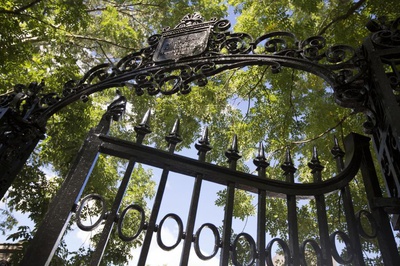
News
Harvard Grad Union Agrees To Bargain Without Ground Rules

News
Harvard Chabad Petitions to Change City Zoning Laws

News
Kestenbaum Files Opposition to Harvard’s Request for Documents

News
Harvard Agrees to a 1-Year $6 Million PILOT Agreement With the City of Cambridge

News
HUA Election Will Feature No Referenda or Survey Questions
Astronomy Enthusiasts Over The Moon After Exoplanet Discovery

The discovery of seven Earth-sized planets—at least three of which may be able to support life—orbiting a nearby star has thrilled Harvard astronomy scholars and enthusiasts.
A team of astronomers published findings in the journal Nature Feb. 22 that the seven planets—40 light-years from Earth—may be prime candidates for extraterrestrial life forms. According to researchers, last week’s discovery is the first in which multiple Earth-sized planets were found orbiting the same star.
For Andrew W. Mayo ’17, vice president of the Student Astronomers at Harvard-Radcliffe and a joint Physics and Astrophysics concentrator, the discovery brought pure “excitement.”
Mayo said last week’s findings mark the largest discovery in the exoplanet field since NASA’s 2009 Kepler Space Mission, which found other Earth-sized planets much further away from Earth than Trappist-1, which the seven planets orbit. Because researchers found three planets in the habitable zone, he said, it was “a much more interesting discovery” than those made in the past.
David Charbonneau, an astronomy professor, said that the Kepler Mission revealed that small, rocky planets often orbit small stars. After the Kepler Mission concluded, Charbonneau and an astronomy graduate student conducted a follow-up study that found that about one in four stars have planets roughly the size and temperature of Earth. Charbonneau said, however, that the stars studied in the Kepler Mission were very far away.
Trappist-1’s solar system, by contrast, is only 40 light-years away, which is relatively close for astronomical research and accessible via telescope. Charbonneau said that the relative closeness of the newly discovered planets means that astronomers may be able to “study their properties and look for life.”
Andrew M. Vanderburg, a graduate student studying planetary systems at the Harvard-Smithsonian Center for Astrophysics, said he thinks “the biggest thing these planets show is that we’re on the right track.”
Mayo said he is excited to see further research on the Trappist-1 discovery.
“Everyone who is involved in astronomy on campus is very intrigued by the discovery, and beyond that, I think we’re all excited to see what people find in the coming years,” Mayo said. “There’s a lot of follow-up to be done.”
Vanderburg added that similar and follow-up projects are already happening at Harvard. Professor Charbonneau’s MEarth project, for example, which also looks for exoplanets orbiting small stars, is similar to the project that found the Trappist-1 planets. The MEarth project specifically examines stars close to Earth and looks for rocky planets with the potential to sustain life.
According to Vanderburg, the Giant Magellan Telescope will be able to detect biosignatures, or certain molecules like methane, carbon, and oxygen which signal the presence of life. This and the other telescope projects will allow scientists to analyze the seven recently discovered planets and determine whether or not they contain life relatively soon, Vanderburg said.
Want to keep up with breaking news? Subscribe to our email newsletter.
From Our Advertisers

Over 300+ courses at prestigious colleges and universities in the US and UK are at your disposal.

Where you should have gotten your protein since 1998.

Serve as a proctor for Harvard Summer School (HSS) students, either in the Secondary School Program (SSP), General Program (GP), or Pre-College Program.

With an increasingly competitive Law School admissions process, it's important to understand what makes an applicant stand out.

Welcome to your one-stop gifting destination for men and women—it's like your neighborhood holiday shop, but way cooler.

HUSL seeks to create and empower a community of students who are seeking pathways into the Sports Business Industry.
